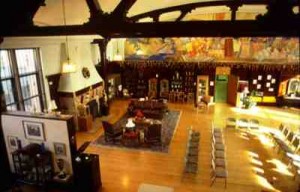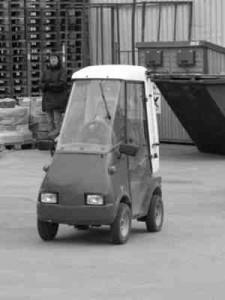Column by Hal Walter
Health – October 2008 – Colorado Central Magazine
THE WORDS SEEMED completely out of context: “Amy had a stroke last night.”
The information, through received in a local coffee shop, came from a reliable source, so I had to believe it was true. The details were sketchy, but from what I gathered, she had fallen out of bed, her partner Gary Ziegler had recognized that she was having a stroke, and called 911. An ambulance had come to Bear Basin Ranch and taken Amy to Parkview Medical Center in Pueblo.
For those who don’t know Amy Finger, she is co-owner of Bear Basin Ranch and Adventure Specialists. She is a very active outdoorswoman, only 47 years old. She rides horseback, hikes, runs, packs into the backcountry, snowshoes, skis, and plays a mean game of chess. She does hard physical outdoor ranch work. I know this, because I have done all of these activities with her at one time or another.
When Gary and Amy decided to put Bear Basin Ranch into a conservation easement program to protect the land from future development, Amy took her newly acquired knowledge and consulted for other landowners putting their ranches into easements near Wetmore, Guffy, and Poncha Springs.
Amy had her stroke the evening after coming back from a two-day horseback trail-clearing mission in the Sangre de Cristo range. After being rushed to Parkview for her initial treatment, two days later she was transferred by air ambulance to the Mayo Clinic in Rochester, Minnesota. It still has not been determined what exactly caused the clot that cut off blood flow to the right side of her brain, paralyzing the left side of her body.
It was a little over a year ago that I rode into Upper Milwaukee Basin in the Sangre de Cristos with Amy, Gary, and other friends who were on our annual neighborhood pack trip. I’d never been to that spot before and Amy and Gary led the way from our camp along Sand Creek. All of them were on horses except for myself (I generally avoid riding anything with ears that short); I was riding Redbo the saddle donkey. Once there, our group stopped for lunch, then people went their separate ways. Some stayed to fish in the creek, some went off to Upper Sand Creek Lake to fish, and Gary bustled away to climb above timberline.
Amy and I rode back to camp together. If I remember correctly, she was nursing an injured knee and riding a fairly green horse, and I was riding a green burro who wanted to jump every water crossing. But we made it back slowly without incident.
So it was indeed an eye-opener one year later to visit Amy in Colorado Springs at Memorial Hospital’s rehab unit where she was transferred after her week of tests at the Mayo Clinic.
At first her voice was somewhat monotone, almost mechanical. But as she warmed up it became more fluid and comfortable. By the time I left, Amy’s speech seemed almost normal and her face much more relaxed. She became especially animated when the subject turned to horses, cattle and the ranch. She talked about getting back on a horse as soon as possible.
Amy noted that before the stroke she had been running regularly nearly every morning. Just a week before the stroke she had finished up a run and thought that she felt like she was in the best shape she’d ever been in. “It just doesn’t seem fair,” she said.
WELL, IT’S DEFINITELY NOT FAIR when something like a stroke hits someone this active, this young. But the good news is tests show substantial brain-tissue regeneration, and Amy has regained some movement in her left side. Everyone who knows her hopes for and believes in her full recovery. We all hope by this time next year she’ll be ready to get back to the backcountry on one of our group pack trips.
Last year at this time Amy had helped me move the herd of cattle I manage to a winter pasture in Avondale, east of Pueblo. Her expertise and willingness to help with livestock is something I’m sure I’ll miss this fall and winter.
We keep this small herd of Angus-composite beef cattle on a 640-acre “school section” lease next to Bear Basin Ranch in the Wet Mountains. These cattle are raised to natural standards using no antibiotics or growth hormones. They live on high-altitude grass and forage, mountain spring water, natural sea salt and minerals and nothing else. They are not fed grain and not kept in close confinement.
One thing I’ve noticed as our herd of cattle has grown to more than 30 animals is that it is much more difficult to count the animals. As you’re trying to count, the cows shift and move around. The calves hide under their moms, and sometimes in the brush nearby.
One day recently, I was counting away and thought, “that’s sure a funny-looking calf.” Then I stopped and backed up. The funny-looking calf was a young bear traipsing across the hillside above the herd. Out of a pure sense of wonder, I uttered: “damn.”
After three years, this year we are in the position to offer some of these cattle for sale. We have animals available for pasture-harvesting by the local meat shop, as well as calves, cows and heifers bred to our certified Angus bull. These cattle would be great for people who want to raise their own beef on a small scale, or for someone wanting a starter herd.
The reason we are selling some of the cattle is to make life easier on me, and to reduce the winter feed bill. Mainly it’s the latter. Besides, regardless of how many we keep, we’ll have a fresh crop of calves next spring.
IN RECENT YEARS I’ve been playing with using my large-breed “saddle” donkeys to help me with the cattle, convinced they can do some types of work just as well as a horse. For the most part we’ve done pretty well.
Recently two of our heifers got through the fence onto Bear Basin Ranch so I saddled Laredo and went over there to move these two strays back where they belong. I opened the gate on the upper end of our pasture, then rode around until I located the heifers, one solid red and the other solid black. They were downhill from the gate and against the fenceline. I figured between Laredo and my dog Sam it would be a cinch to keep them pinned against the fence and drive them uphill to the gate. The only problem was, these heifers wouldn’t budge.
Laredo actually bumped both of them and still they would hardly move. Finally I drove Laredo harder toward the black heifer. We were both surprised when she turned, lowered her head and drove it into Laredo’s shoulder. There was a feeling of being off-balance, then Laredo spun out of it and bolted downhill. I managed to get him under control in short order and avoid getting tossed.
We did eventually get the heifers moved back through the gate, but I have to admit that unexpected shove got my attention.
As I rode away, the heifers were headed back toward the main herd, and I was left to ponder the wonders of a beautiful fall day. It’s important to appreciate each and every moment in all you do. Because you never know what’s ahead.
Hal Walter cultivates livestock, prose, and a family in the Wet Mountains near the ghost town of Ilse.


